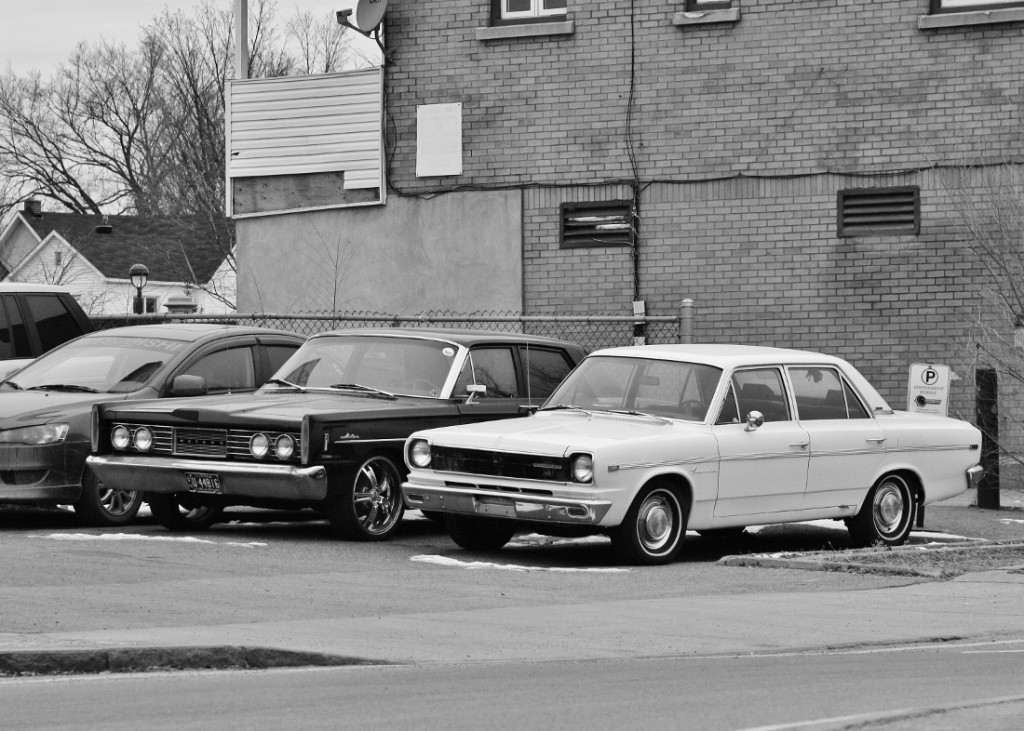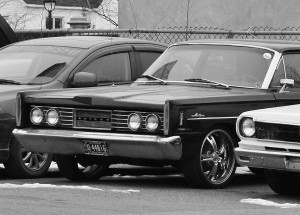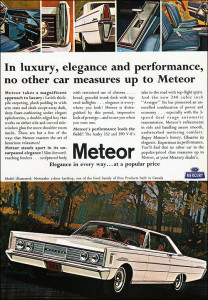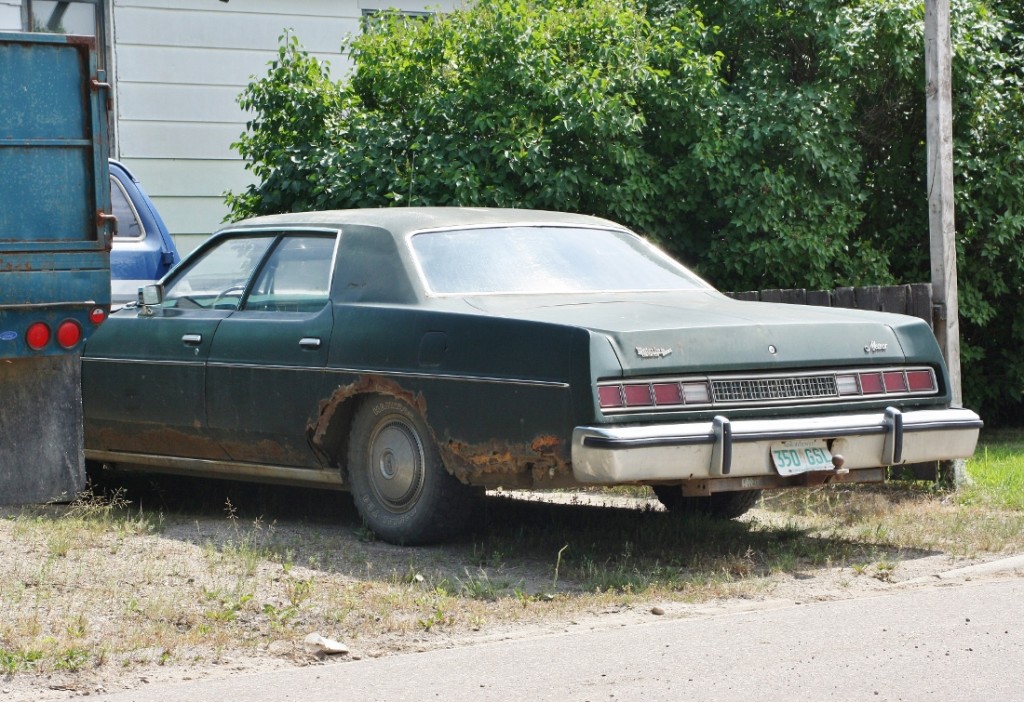Isn’t this picture a perfect, quintessential Quebec winter scene?
If you’re not sure, probably because you’ve never been there, just know that yes – yes, it is.
Grey, leaden skies, drab streetscapes, and crater-filled roads encrusted with a white rhime of road salt. Oh yes, and a frigid, icy wind that cuts through you like a knife from early November onward.
Come one, come all.
Against this ultra-Canadian backdrop – worthy of a depressing film nominated for multiple awards – we find a distinctly Canadian classic car cuddling up to a (literal) American classic, possibly for warmth.
A rare encounter at the best of times, the frozen stars aligned enough to bring this 1965 Meteor Montcalm within door denting distance from a 1966 Rambler American. Amazingly, both vehicles appeared in great shape, though the Rambler was the only one to escape present-day modifications (though I suppose rims and window tinting is benign enough).
The complicated history of Rambler was covered by moi not long ago on this very page (scroll down! scroll down!), so the Meteor gets the spotlight in this post.
Now, an American viewing this photo would insist we were looking at a ’65 Mercury, but they would be wrong. The devil is in the details.
Meteor, a Canada-only product of the Ford Motor Company introduced in 1949, did what the much-maligned Edsel failed to do a decade later – it fit comfortably into the Ford-Lincoln-Mercury stable as a standalone make.
Slotted between Ford and Mercury at the lower end of the ladder, the Meteor was essentially a Ford with more brightwork and niceties, but at a lower price than Mercury.
Canadians took to the Meteor instantly, and the make soared through the ’50s, enjoying lofty sales as the Greatest Generation was busy cranking out the Boomers while staring into a glorious, limitless future.
Coincidentally, it was the success of Rambler in the late 1950s (spurred by the sharp ’58 recession) that led to the first death of Meteor following the 1961 model year. The popularity of Rambler’s cosy, fuel-efficient compacts prompted the Big 3 automakers to enter the compact field in 1960, spreading the big car field too thin at Ford of Canada.
Something had to give, and Meteor was canned – but not for long.
Like most fads, the compact craze proved short-lived as the economy returned to normal and a thirst for big cars returned to the car-buying public. Meteor was back for 1964, this time based on a Mercury.
Mercurys of that era – especially the ’65 – had an upscale appearance thanks to their Lincolnesque, slab-sided bodies, something that gave the Meteor an injection of class.
To keep the price in line with its place in the company’s lineup, the Mercury-bodied Meteor was outfitted with the seats, dashboard, base engine, and roofline of a Ford.
Flashy on the outside and restrained on the inside, the ’65 Meteor came in the same body styles offered by its stablemates, in either the Rideau, Rideau 500 or top-line Montcalm trim level. From a vinyl bench and a 240 c.i.d. six-cylinder to plush buckets and a 390 V-8, if you had the cash (or didn’t), there was a Meteor with your name on it.
Meteor soldiered on in the Canadian market well into the 1970s, as before, based on the Mercury line of vehicles.
Towards the end, the line between the two makes grew increasingly blurred, as Mercury badging could be found on a Meteor, in addition to Rideau 500 and Montcalm model designations.
1976 proved to be the last year for the standalone Meteor brand. However, in keeping with the make’s original intent, the name survived until 1981 on a low-priced base model of the Mercury Marquis offered exclusively in Canada.
The Meteor’s rise in the Canadian automotive scene was truly meteoric, but its fall back to earth was much more gradual. Kind of like a golden Muskoka sunset fading to dusk, slipping into twilight, and then… nothing.



